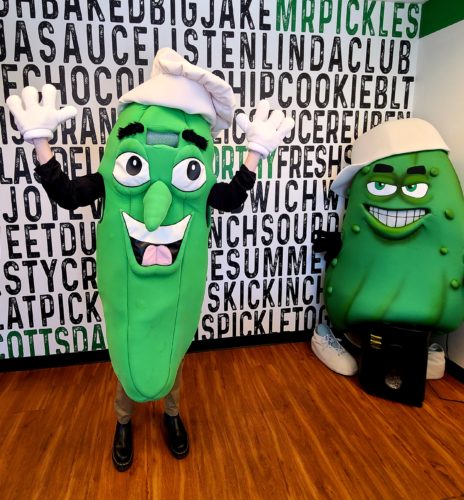An Important PR Milestone
At HMA, our team will always go the extra mile for our clients. Sometimes we go that extra mile dressed like a golf ball, a duck or even a large tomato.
Last week, I reached an important milestone in my PR career, it was my turn to go that extra mile. So I happily donned a pickle suit and became Mr. Pickles. With this accomplishment, my team states that I have now officially become a PR person. But while sporting my pickle suit and wielding a giant size fork and knife, I couldn’t help but come up with a few questions. How did mascots come to be? How have mascots become an eternal marketing tool for sports teams, schools and even sandwich shops. And, how do they survive in these hot suits?
Originating from the French term ‘mascotte,’ meaning lucky charm, the word was first used in 1867 before being brought to the English language in 1880. Prior to modern day mascots, real animals were used as mascots back then to introduce new excitement to sports games and intimidate rival teams. As puppetry became more advanced in the mid-20th century, mascots were then adapted to become the costumed puppets that we know today.
And mascots are far beyond just being cool to look at, they also provide a number of benefits to help your brand or business connect with audiences, stand out from competitors, build brand awareness and spread your message, no speaking required. And while mascots are commonly seen as a way to appeal to younger audiences, everyone loves to see a cool mascot at an event, regardless of their age.

